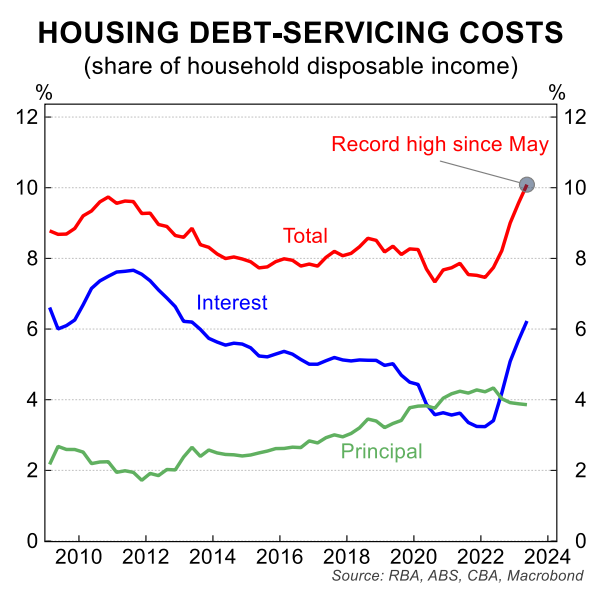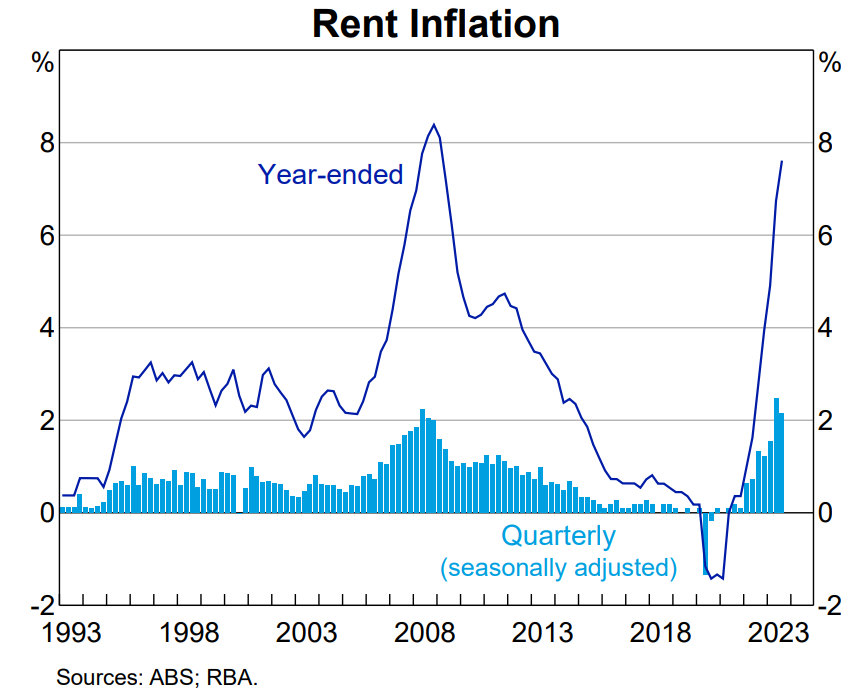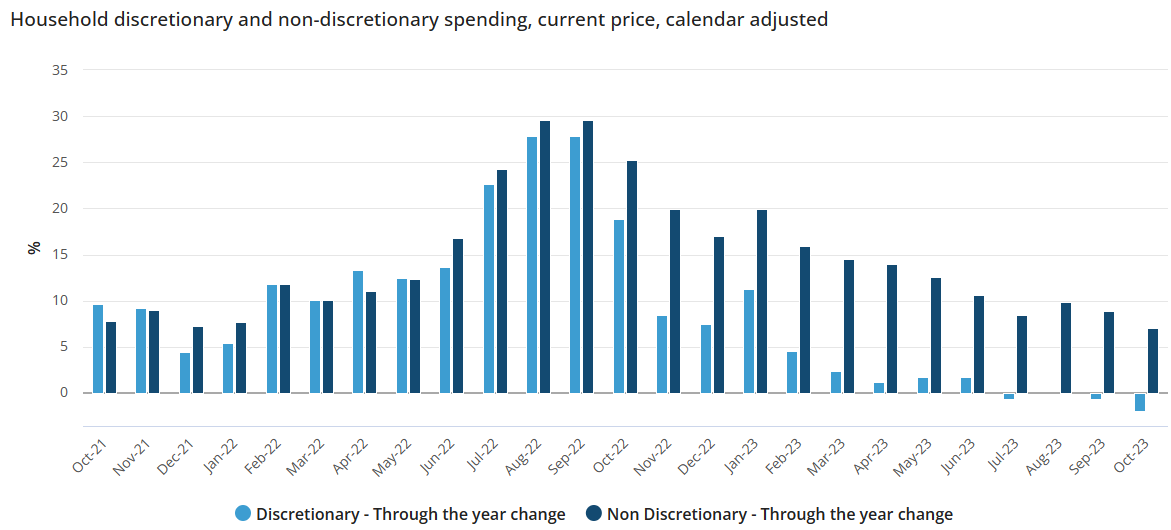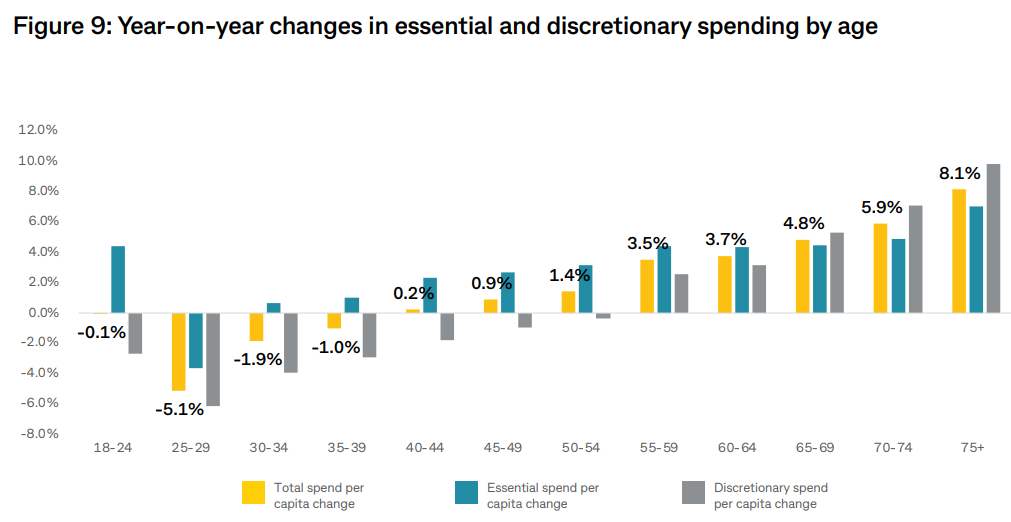Before last month’s interest rate hike from the Reserve Bank of Australia (RBA), Australian households were already spending a record share of their incomes on mortgage repayments:

Australian households were also spending a higher share of their incomes on essentials like rents and energy following rampant inflation over recent years.

To nobody’s surprise, these factors have converged into Australians reducing their spending on discretionary goods and services, according to the ABS’ latest household spending indicator:
Household spending increased 2.7% through the year on a current price, calendar adjusted basis.
Through the year, household spending increased for services (+7.0%) but fell for goods (-1.9%).
Through the year, household spending increased for non-discretionary (+7.0%) but fell for discretionary spending (-2.0%).

Robert Ewing, ABS head of business statistics, said growth in household spending has slowed in recent months, as households tighten their spending amid cost-of-living pressures.
“The 2.7% increase in the year to October follows a downward pattern after spending rose 5.2% in the year to August, and 4.3% in the year to September.
“Less spending on discretionary services such as eating out, accommodation, and recreation and cultural services all contributed to the slowdown”.
“Compared to October last year, discretionary spending fell 2.0%, while non-discretionary spending rose 7.0%”.
Adjusting for inflation of nearly 5% and population growth of around 2.5%, real per capita household spending is sharply negative, with discretionary spending well and truly collapsing.

Worse, according to CBA’s survey data (above), the spending that is taking place is being driven by older Australians who largely unaffected soaring mortgage rates and rents.

